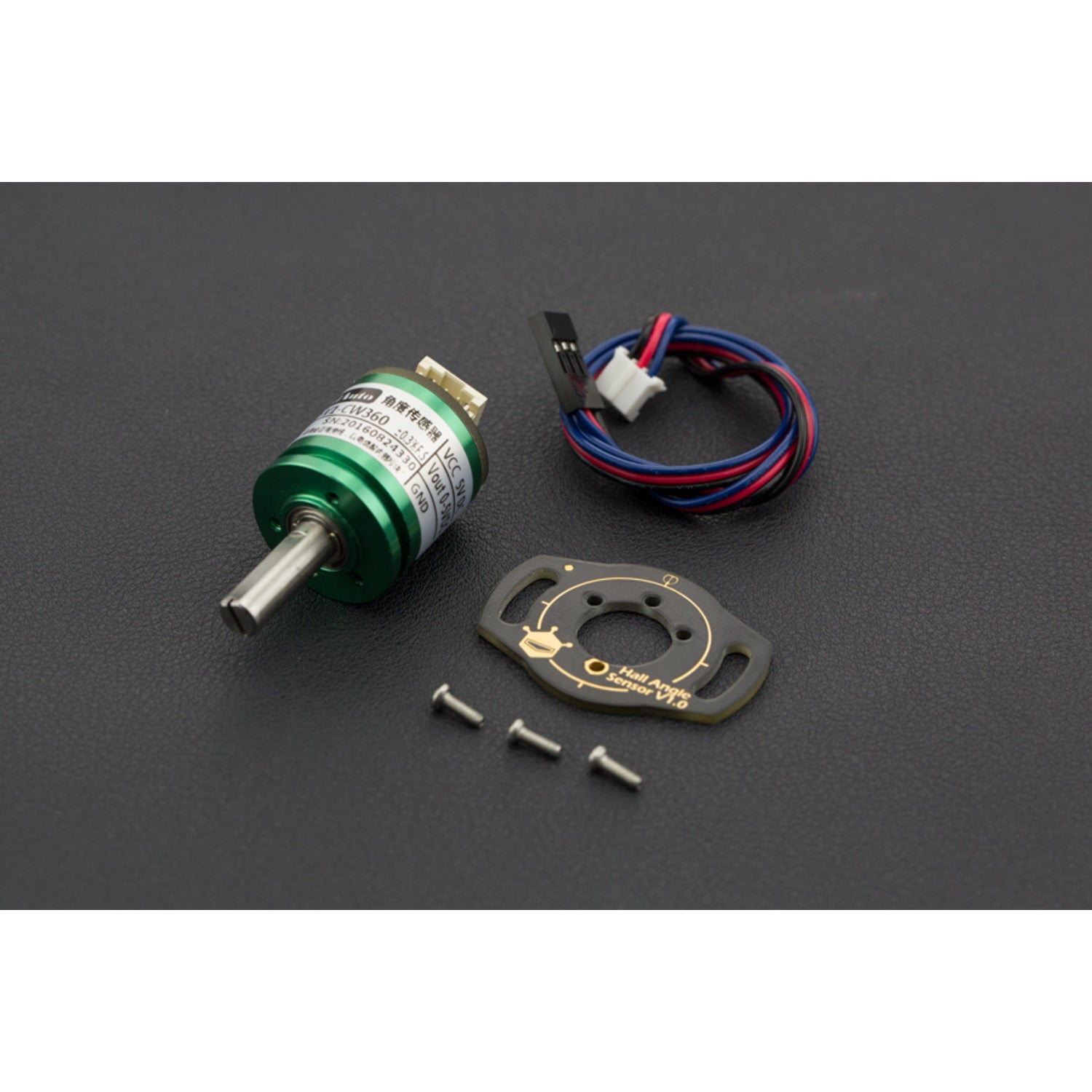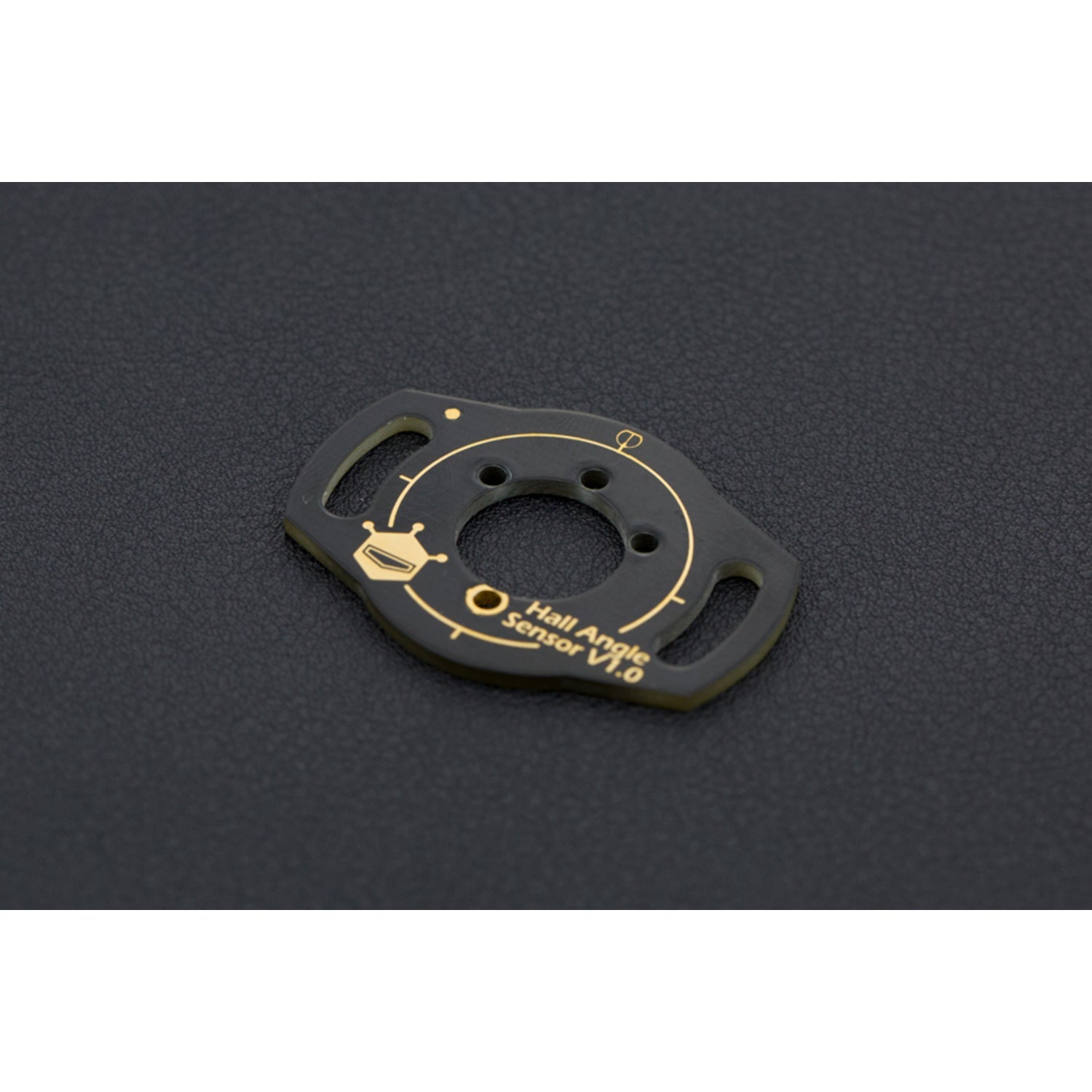The Gravity 360 Degree Hall Angle Sensor is a compact and high - performance device. It operates on the Hall effect principle and is fully compatible with the DFRobot Gravity sensor interface. Running on a 5V DC power supply, its 0 - 5V analog output allows for seamless integration with Arduino. This sensor converts angle information into an electrical signal. When the object's rotation angle is transmitted to the rotation axis sensors, it outputs a signal proportional to the angle. Its shell is made of sturdy aluminum alloy and uses Hall - type non - contact technology. It features high - quality imported high - speed stainless steel bearings to reduce frictional resistance during readings. With a long service life, high resolution, smooth rotation, and low dynamic noise, it performs well in harsh industrial environments and is protected against electromagnetic interference, water, oil, vibration, and shock. Ideal for crank angle sensing and steering angle measurement. Specifications include a mechanical angle of 0 - 360° (non - stop), an operating voltage of 5V ± 10%, an operating current of <13.5mA, and more. Shipping includes the sensor, an installation baffle, a gravity analog sensor cable, and M2x6 crews.


Using the Gravity 360 Degree Hall Angle Sensor is easy. First, connect it to the DFRobot Gravity sensor interface. Then, power it with a 5V DC power supply. You can directly connect it to an Arduino due to its 0 - 5V analog output. When using it, make sure the object's rotation axis is properly connected to the sensor's rotation axis for accurate readings. For safety, keep the operating voltage within 5V ± 10%. Avoid overloading the sensor with an axial load greater than the specified limits (horizontal <5N; vertical <10N). When it comes to maintenance, keep it in a dry and clean environment within the operating temperature range of - 30 °C to +80 °C. Since it has a long mechanical life of over 50 million revolutions, it generally doesn't require frequent replacement. But if you notice any abnormal readings or performance issues, check the connections and power supply first.